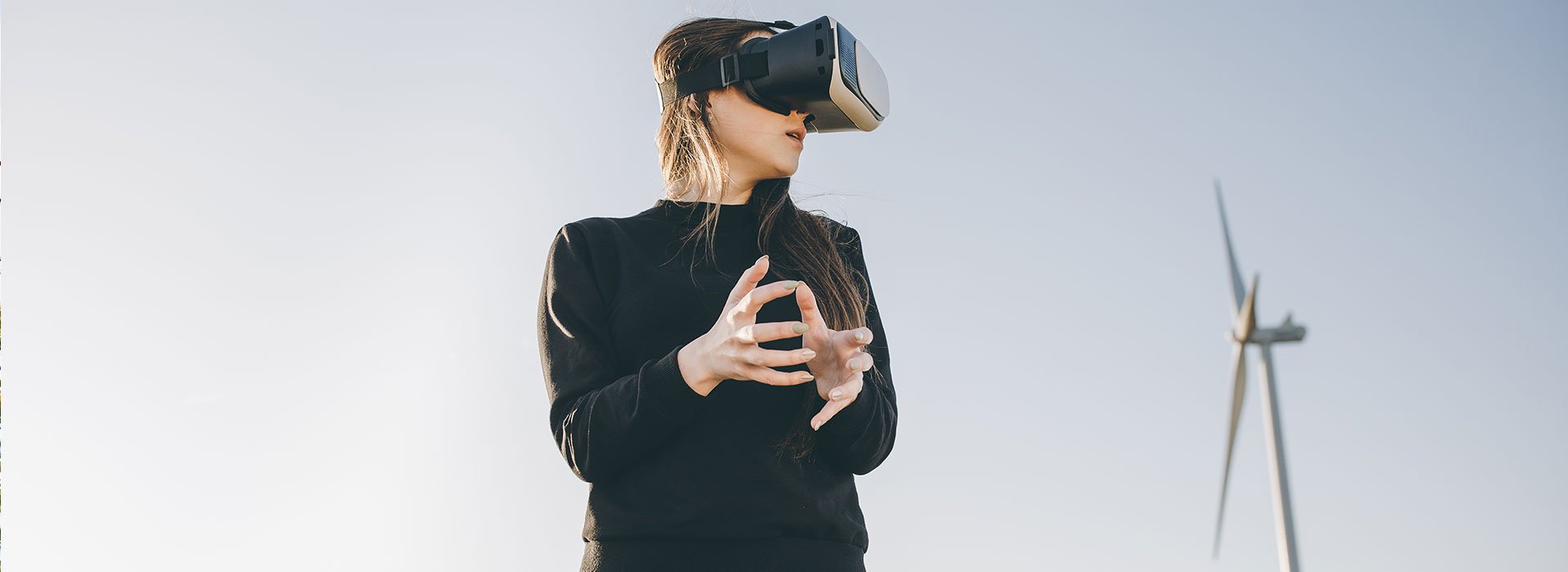Joana Godinho Dos Santos: Different Perspectives to H&S Issues
Having decided to move from Portugal to Germany to pursue a career in health and safety, Joana understands what it means to move out of your comfort zone. Here she talks about how a questioning mind, a love of technology and getting buy-in can help improve health and safety.


Joana Godinho dos Santos
HSE Internal Project Manager, Siemens Gamesa Renewable Energy
Q.
Your career progression suggests someone who is not afraid to take risks. How is this useful in a health and safety role?
It is not a question of taking risks, but rather one of embracing challenges! The move I made from Portugal to Germany was a risk in taking on a new language, a new culture, on top of a new role. But all in all, a controlled risk worth taking as I wouldn’t want to look back and say, “what if”? Exploring new ideas is all part of keeping health and safety-relevant. It’s also important to have a curious mind and explore the whys and hows. So, while I have no problem complying with the rules, I always need to understand their purpose, so I can communicate why they are important. If you can explain the long-term benefits, safety transformation usually happens much faster. It’s a pedagogical approach that pays the highest dividends when seeking to improve safety behaviours.
Q.
What is your approach to getting more people to ‘buy in’ to improve safety culture?
In terms of improving the whole culture of safety, I think there’s still a long way to go. However, I do believe that health and safety need to become more organic. Yes, we need a legal framework and necessary standards and rules, but it’s fundamental that practices mimic the real working environment. I think there’s very little value in producing an extensive document on a complex safety procedure that no one will read or understand. Health and safety need to be inclusive and active in changing how we perceive risk. It’s about making changes that others can replicate across the business ecosystem easily. Whether it’s at the leadership level or a charismatic colleague in the workshop, it’s about putting the spotlight on good behaviour so that others will follow their example. You need to grab those people who are driven and passionate about health and safety and nurture them to make sure that their voices are heard. Because these are your enablers; they are the ones who will support you in improving safety behaviours.
"There are enormous benefits to deepening the talent pool and encouraging different perspectives and solutions to health and safety issues."
– Joana Godinho dos Santos, HSE Internal Project Manager, Siemens Gamesa Renewable Energy
Q.
COVID-19 raised many challenges for companies in the industrial sector. What lasting impact will it have on health and safety?
For companies in general, it was a steep learning curve having to implement the necessary changes to health and safety procedures at speed. We already had a strong safety culture in place, so our targets were clear from the beginning: keep our employees safe while ensuring business continuity. We placed tremendous effort in securing safe work environments for our colleagues who need to work in our factories, on sites, and on vessels, as they cannot work remotely. We sent as many office-based employees to work from home as possible, again to keep our in-person locations safe. But it’s not only about the work environment being safe but also whether people feel they are safe. Perception is important. On a deeper level, the pandemic is also beginning to impact other areas. Simple things such as how innovation is being stifled by not being able to grab a coffee and chat. Such impromptu get-togethers would often spark ideas that keep people motivated and progressing. There’s also the issue of communication. On top of traditional health and safety communication, we now have additional COVID-19-specific topics, plus vast quantities of external information from official entities and media that adds to what people must process. Information overload is becoming a worrying trend since people are more likely to switch off when they reach a saturation point. This is not a trend we wish to see in health and safety and is something we need to carefully monitor and manage in the medium- to long-term. On a positive note, COVID-19 has helped people feel more comfortable talking about mental health issues. This is a big benefit and one we hope to take advantage of in future health and safety programs.
Q.
How important a role can technology play in improving health and safety?
We can already see how technology is being used to significant effect in industries such as medicine, architecture and even hospitality, so why not explore and capture the enormous potential in safety? Of course, if you love the idea of technology it helps to see its potential. For me, it offers exciting possibilities in the areas of big data and communication. Employing technology to harness health and safety data can help us become more agile in reacting to issues and implementing measures. In terms of communication, augmented or virtual reality can help people visualise dangers in a more dynamic way that is often lacking in written manuals. This same approach can be used in training, where technology can help facilitate real-time risk assessments or allow workers to consult with experts worldwide while on the job. I think COVID-19 has also helped to open our eyes to technology’s potential to improve sustainability. We have seen how helpful technology has been during the lockdown in allowing us to meet virtually and to ensure health and safety programmes remain on track. But it shouldn’t be something we put back in the box when we eventually return to more normal working conditions. We can still use technology to, for example, help reduce our carbon footprint at times when it is not essential to be physically at a meeting on the other side of the world.
"Augmented or virtual reality can help people visualise dangers in a more dynamic way that is often lacking in written manuals."
– Joana Godinho dos Santos, HSE Internal Project Manager, Siemens Gamesa Renewable Energy
Q.
What strategies can we use to ensure that health and safety continues to add value?
Health & safety is about people. Getting early buy-in from key stakeholders is essential; actively listen to the organisation and their needs. By listening, you can assess the approach that adds the most value. You also need to identify people within the organisation that are most passionate about health and safety and give them a voice. These are the ones who will help you bring a health and safety programme to fruition and improve its chances of success. Finally, less is more! Keep health and safety simple. If you make it too complex it will require a lot of time and energy to understand and your chances of a positive outcome are vastly reduced.
Q.
How would the wind energy industry benefit from a more diverse workforce?
I think there are enormous benefits to deepening the talent pool and encouraging different perspectives and solutions to health and safety issues. Siemens Gamesa is working hard to drive change in wind energy to shift from a traditionally male-dominated industry into a more attractive career option for women. Generally, the traditional idea of one career path for men and one for women is beginning to change. Companies are improving the opportunities and becoming more aware of the benefits a diverse workforce brings. Of course, it’s not always easy to be at the forefront of change. Fear often holds us back, but I think it’s about using that initial fear of working in a new environment to push yourself out of your comfort zone. It’s about investing in your abilities, using role models to propel you forward and giving it your best shot. I’m sure we can all look back and see areas that we’d improve given the chance again, but that only shows we’ve learned and grown into better versions of ourselves. That’s something to celebrate and can only happen if we take the opportunities when they come our way.
"Jobs in sustainability, health and safety are a team sport. We need lots of different voices and styles to ensure safety programmes have the best chance to succeed."
– Joana Godinho dos Santos, HSE Internal Project Manager, Siemens Gamesa Renewable Energy